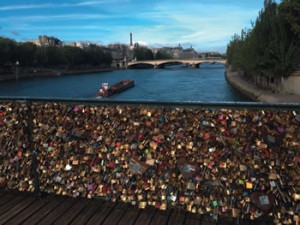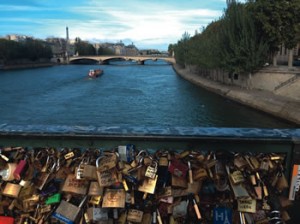Concrete Symbols
During the Protestant Reformation, one set of catch cries of the Reformers was the “Five Alones”. From the teaching of Martin Luther these phrases encapsulated the Protestant viewpoint: “By Scripture alone”, “By Faith alone”, “By Grace alone”, “Through Christ alone”, and “Glory to God alone.”
Luther had objected to the selling of indulgences, holy relics, the intercession of the saints, papal authority and much else. He did not like the way the Catholic Church claimed to mediate salvation. He wished believers to be able to “cut out the middle-men” and go straight to God.
John Calvin took these principles to an extreme and encouraged the removal of statues and images in the churches. The interiors were whitewashed. A stark, plain place of worship so nothing would distract the believer from God.
The Catholic reaction was the Baroque – churches filled with statues, images, and angels in the architecture. They knew that we are not disembodied minds, that we respond to objects, pictures, places and people. God did not try to deal with humanity only through words and ideas. The Word of God became flesh and was born of a woman. God knows that people relate better to other people than they do to ideologies. We need concrete things to handle and real tasks to do, our faith needs actions. The motto of my secondary school, St Bede’s, is the Catholic answer to the second of Luther’s “alones” – Fide et Opere – by Faith and by Works.
My musing on the human need for concrete expressions of deep truths was sparked by walking over a pedestrian bridge in Paris. The Pont des Arts has become a place that lovers visit. To express their love they buy a padlock, write their names on it, attach it to the bridge and throw the key into the Seine. This is not organised by anyone, the French authorities tolerate it but do not encourage it. 
The appeal of the gesture is evident because the whole bridge now glitters with the solid mass of padlocks lining both sides. There is not a lot of pragmatic sense in attaching a padlock to a bridge and throwing the key away, but the romance of it feels right to a couple who are in love. They want to symbolise publicly this important thing happening in their life.
Catholicism is full of concrete symbolism: plaster statues, crucifixes, ex votos, kneelers, holy water stoops, liturgical colours, vestments, wedding rings and holy pictures. They are all sacramental -- they can be means of grace, things that lift our minds and hearts to God. God is transcendent and beyond all of that and can be found anywhere and everywhere, but we are human and limited, and holy things, holy actions, holy people and holy places help us to reach out towards the God who is love.

 Entries(RSS)
Entries(RSS)